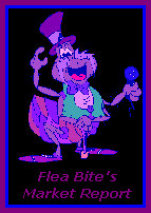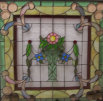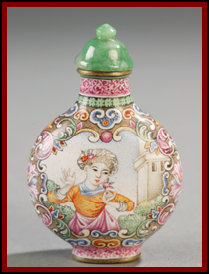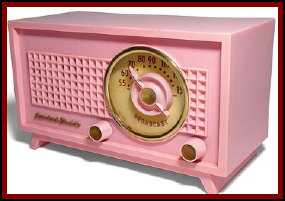




























www.NOVA-Antiques.com does not manage, own, promote or operate the antique shows, flea markets, estate sales or auctions listed on
these pages. All information is provided as a service to our subscribers and clients. Although we try to verify all listings
for antique shows, flea markets, estate sales and auctions prior to publication, there are times that date, location and times changes
are made by owners, managers and/or promoters that are not communicated to us in a timely manner. It is a good idea to check
with the owners, managers or promoters to make sure the event is being held before embarking on a journey.


Antique & Vintage Collectible Chinese Snuff Bottles
Towards the mid-20th Century, when snuff was first introduced in China, it
was believed that it had medicinal qualities and was used to treat the common cold, relieve sore throats, alleviate tooth aches and
used as a cure for migraine headaches. Snuff however was not intended nor was it used for all the people of China, but was limited
in use and availability to the upper echelons of society. It was mainly used by the elite peoples associated with the Qing Dynasty and
the royal court of Beijing. As such, vessels to carry the snuff otherwise known as snuff bottles and or snuff boxes had to be attractive,
ornately designed and beautiful to go with one’s social standing.


A Short History of Emerson Radio
Emerson Radio got its start in 1915 as the Emerson Phonograph Company with roots in the record business. In the 1930’s, although still in the phonograph and recordings business they became more and more involved with producing radios and
became very prominent with the introduction of peewee radios, which were small and compact; perfect during the depression era. They were not the only company offering these small radios, but clearly the leader. Half of all peewee radios were made by Emerson
and by 1938, they had sold more than a million units.
In the mid ‘30s, Emerson was also one of the leaders in the production of radios made of Catalin material. Before this, most
radios were made of Bakelite or Plaskon and although the material was more resilient and sturdy than Catalin, the radios were not
colorful, nor pleasing to look at. Some of the most sought after retro and vintage radios on the market today were made by Emerson. In fact, one of our personal favorites is the Emerson model 646B made of shiny crimson molded Catalin plastic.
Emerson Radio has survived all of these years by adapting to the changing times and knowing their clientele. Today, known only
as Emerson, the company continues the tradition of making quality products for a worldwide audience; and the product range includes
DVDs, television, home theatre and other middle to high end audio products.